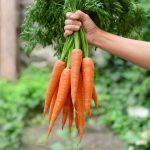A group of researchers made up of Bangladesh Agricultural University (BAU) headed by Dr. Md. Harun Ar Rashid, has created a variety of high yielding carrots. The research was conducted in collaboration together with USAID, USDA/ARS, and Bangladesh Agricultural University Research System has analyzed the yield of 56 US carrot varieties, as well as 24 varieties native to Bangladesh.
Traditional cultivation of carrots yields around 10 tons per hectare However, the new varieties are expected to produce 30 – 40 tons per an acre. Importantly, these varieties are ideal for hot regions that are drought-prone in Bangladesh.
Dr. Md. Harun Ar Rashid stated that the high yielding carrots could be picked within 70-80 days and each one weighing 200-250 grams. The cultivation is successful in areas that are prone to drought, such as northern Bangladesh.
The professor also spoke about the possibility of growing different colored carrots high in Vitamin A as well as anthocyanin as well as antioxidants. He highlighted the benefits to health of these antioxidants, aswell the possibility of using them in the form of natural food coloring.
Presently, Bangladesh imports 99% of its carrot seed, most of which are hybrids with a significant price. The team is trying to create seeds based on the new varieties that are high yielding, that could supply farmers with seeds at a reasonable price and help the government save a significant amount of foreign currency.
Source: unb.com.bd
